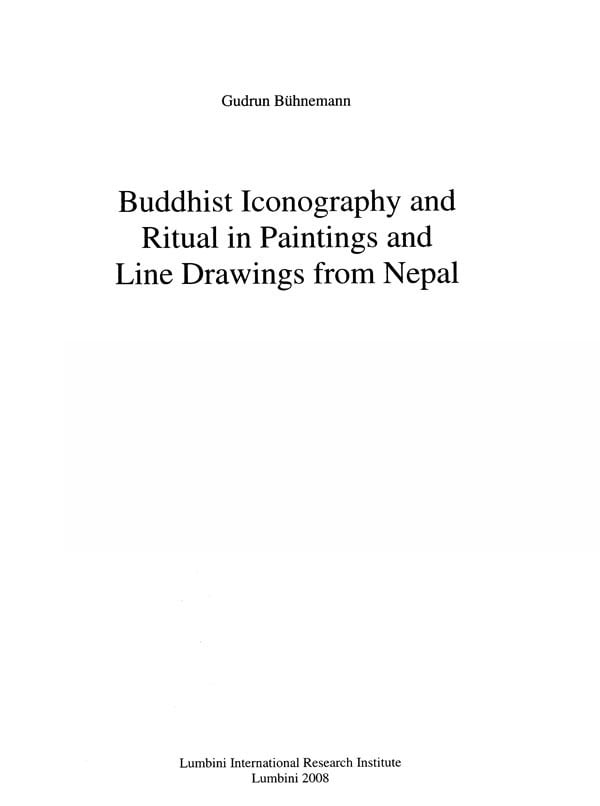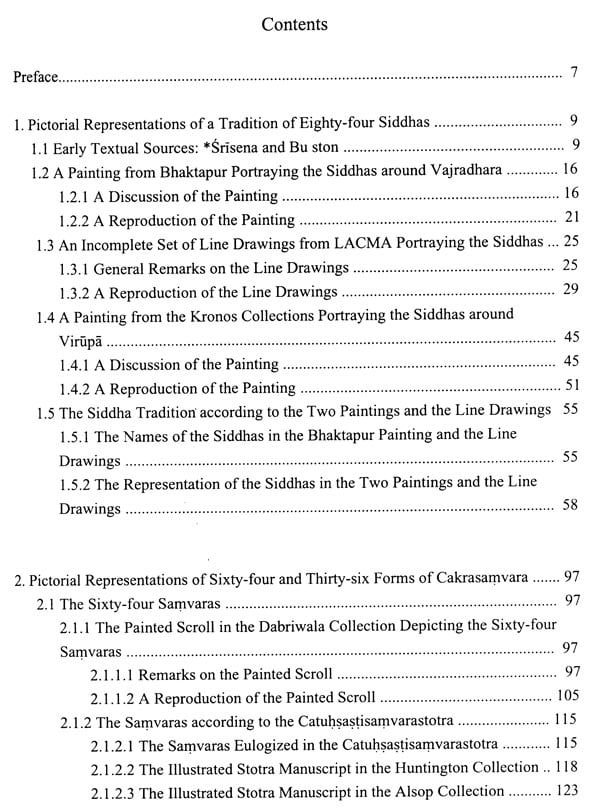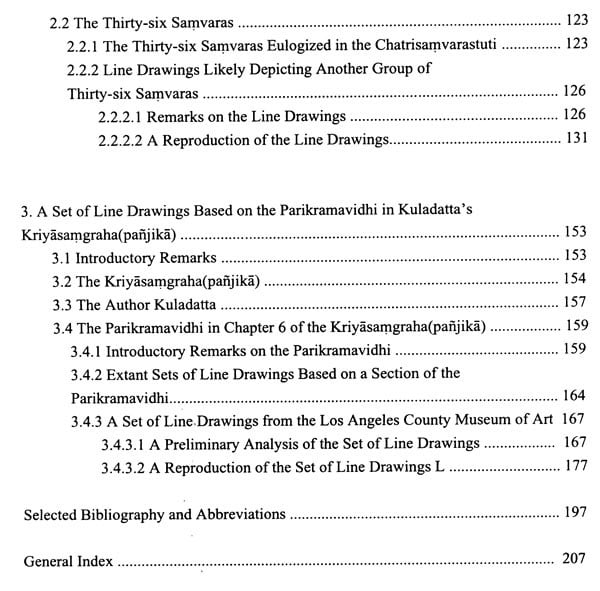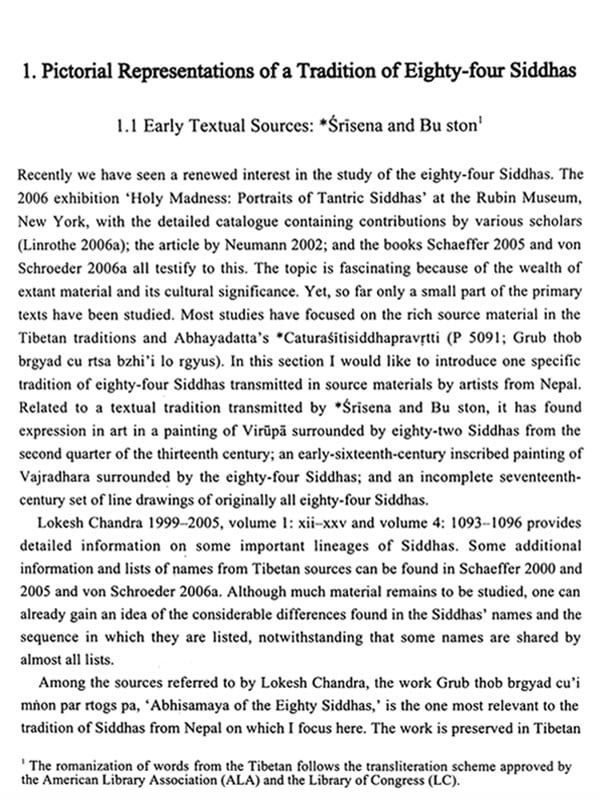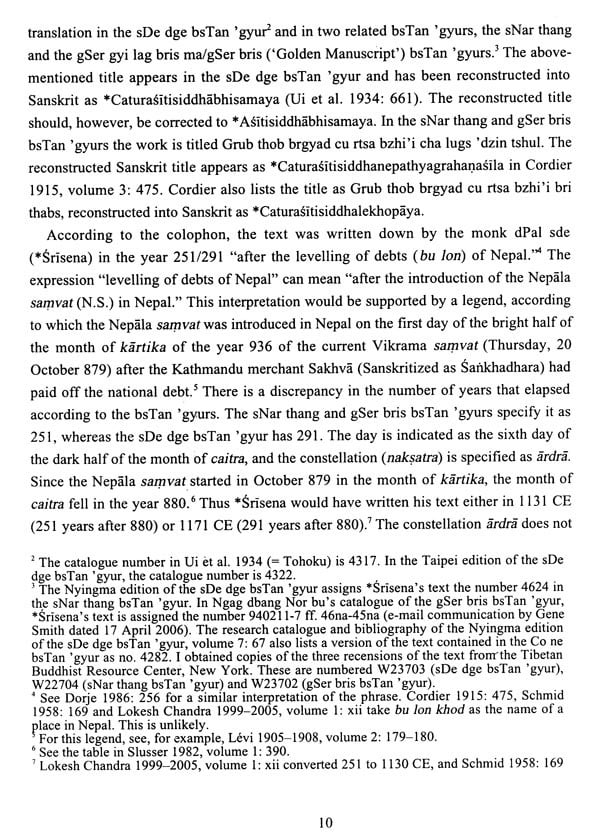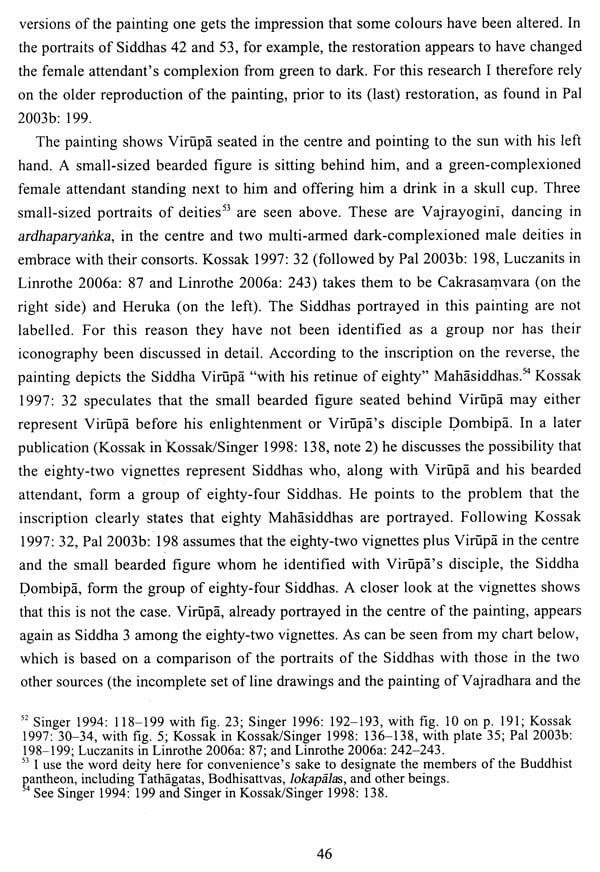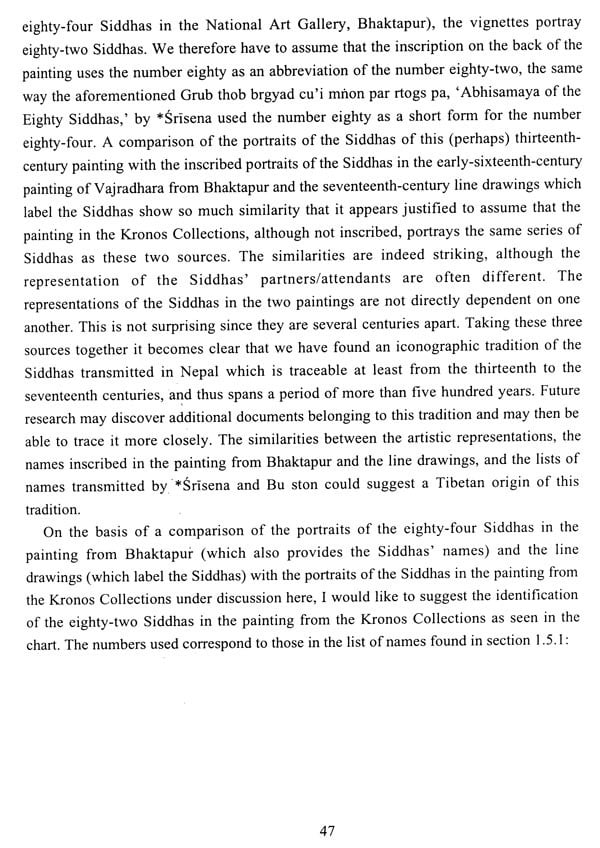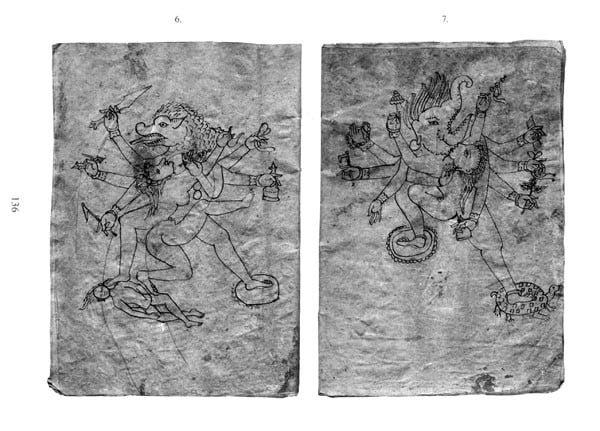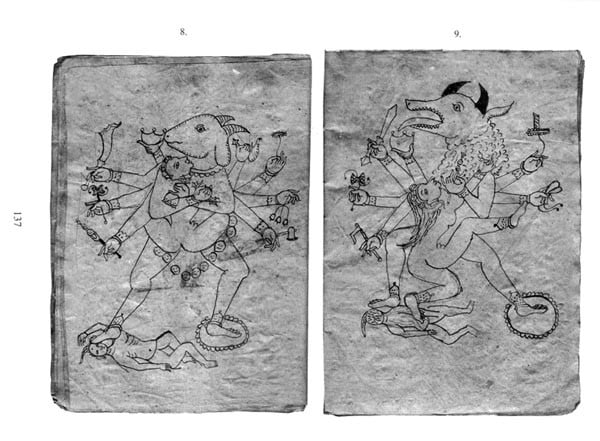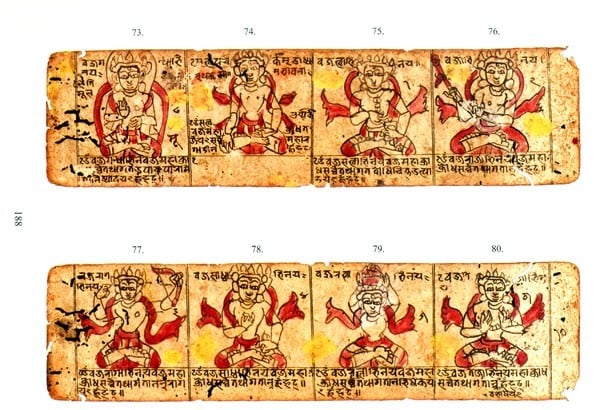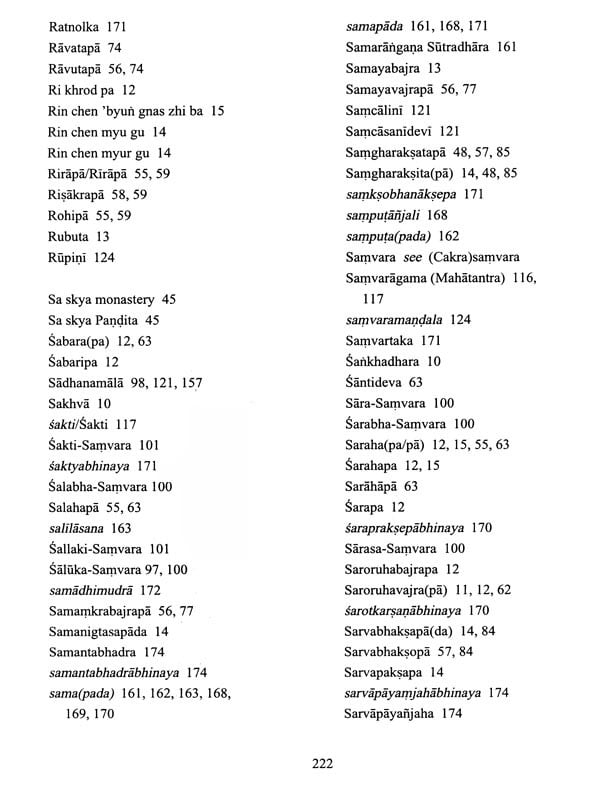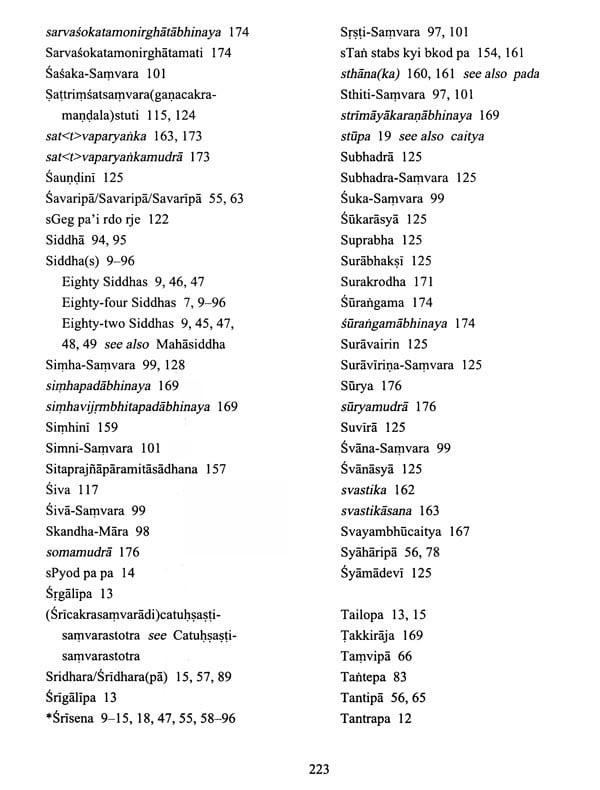
Buddhist Iconography and Ritual in Paintings and Line Drawings from Nepal
Book Specification
| Item Code: | UAO271 |
| Author: | Gudrun Buhnemann |
| Publisher: | Lumbini International Research Institute, Nepal |
| Language: | English |
| Edition: | 2008 |
| ISBN: | 9789994693344 |
| Pages: | 226 (Throughout Color and B/w Illustrations) |
| Cover: | PAPERBACK |
| Other Details | 11.00 X 8.50 inch |
| Weight | 660 gm |
Book Description
The set of line drawings of originally all eighty four Siddhas (now in the Los Angeles County Museum of Art) goes back to the seventeenth century. On the basis of a comparison of the portraits of the eighty-four Siddhas in the painting from Bhaktapur (which provides the Siddhas names) and the line drawings (which also label the Siddhas) it is suggested that the eighty-two Siddhas surrounding the Siddha Viraph in the other Nepalese painting, from the second quarter of the thirteenth century, which is now part of the Kronos Collections of S.M. Kossak, New York. are part of the same tradition. The Siddhas in this well-known and frequently reproduced painting have so far remained unidentified since their names are not inscribed in the painting The second section of the book focuses on lesser known manifestations of (Cakra samvara, a form of Heruka, and includes a discussion and reproduction of images of two groups of Samvaras. The first document is a painted scroll showing the group of sixty-four Samvaras with their consorts, the second one is a set of line drawings of what appears to be another group of Samvaras (thirty-six in number) with their consorts The last section presents a set of line drawings which is based on a section of the parikramavidhi found in chapter 6 of Kuladatta's Kriyasamgraha(pañjika) This text is an important Tantric manual which has been particularly influential in Nepal and whose author may even have been of Nepalese origin. The set of line drawings, which dates from approximately the eighteenth century, illustrates the ritual of walking around the site of a mandala. The line drawings are of great interest for the study of Buddhist ritual, since they illustrate a large number of stances, sitting postures and hand gestures described in the Kriyasamgraha(pañjika) but whose names are not recorded in standard reference works on iconography.
The first section presents two paintings and an incomplete set of line drawings documenting a tradition of eighty-four (great) adepts (maha) siddha) from Nepal. The second section focuses on manifestations of (Cakra)samvara, a form of Heruka, and includes a reproduction of images of two groups of Samvaras. The first document is a painted scroll showing the group of sixty-four Samvaras, the second one is a set of line drawings which shows what are likely thirty-six Samvaras.
The last section presents a set of line drawings which is based on a section of the parikramavidhi found in chapter 6 of Kuladatta's Kriyäsamgraha(pañjik). This text is an important Tantric manual which has been influential in Nepal and whose author may have been of Nepalese origin. The set of line drawings was selected for reproduction from several similar sets and illustrates the ritual of walking around a site of a mandala, which appears to have been of considerable importance in ritual practice.
The presentation and discussion of the material in each of the sections differs in length, and is not intended to present an exhaustive treatment of the subject. Such would in any case not be possible at the present state of our knowledge of Tantric Buddhism in Nepal.
I would like to thank lain Sinclair, M.A., and Gerd J.R. Mevissen, M.A., for generously providing numerous useful references, suggestions and photocopies of materials. I am indebted to Kashinath Tamot for help in reading manuscript material and in deciphering the names of the Siddhas and a lengthy colophon inscribed on the painting of Vajradhara and the Siddhas from the National Art Gallery, Bhaktapur. My thanks are due to Rajan Shrestha, Patan, for digital photographs of the painting from Bhaktapur. Professor Anne Vergati sent me four older slides of this painting, and Professor Dina Bangdel scans from her slides of the painting.
**Contents and Sample Pages**
